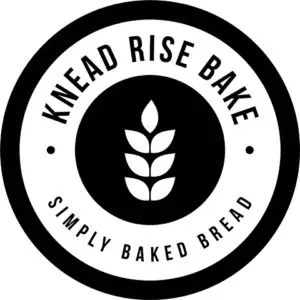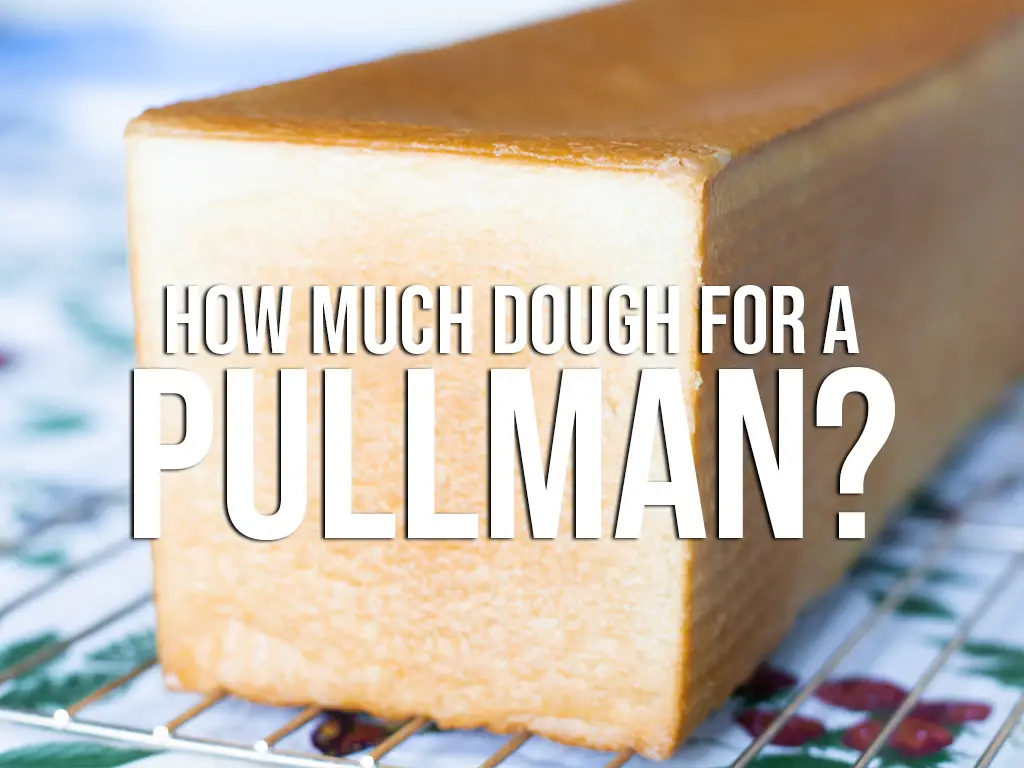We love Pullman pans! As fairly recent converts to the Pullman bread method (also called “pain de mie”) we wish we had jumped on this “train” a long time ago, pun intended. (Pullman loaves get their name from the train company). Pullman loaves have quickly become our go-to daily sandwich bread. The crust is perfectly crips but THIN enough to melt in your mouth. The crumb is moist and pillowy yet ultra-fine at the same time. Exactly what we want sandwich bread to be.
But the biggest struggle we had when we sat down to formulate a recipe, was how much dough our 13x4x4 Pullman would need to create the perfect square shape. Not to brag, but we somehow nailed the first attempt. Out of the oven came a perfectly uniform square shape that held its form after cooling! It was likely mostly luck, but it made us want to do some research and fiddling around with various sizes of pans in order to create a resource that will help others do the same, no matter the size of their pan.
We came up with an equation that has worked well for us, and we think it will help you get close to the perfect weight needed for your recipe.
For standard white bread recipes using commercial yeast or sourdough, aim for a dough weight in grams that is between 5-6 times the volume of your Pullman pan. Splitting the difference between the high end and the low end is a great place to start.
Don’t want to do the math? Just skip down below. We put together a chart with the most common pan sizes and dough weights for white bread and whole wheat.
So How do I Find the Volume and What do I do With it?
In order to find your dough weight, you’re simply going to start off by multiplying the three dimensions of your pan (length x width x height). Using a 13x4x4 pan, you would end up with a volume of 208. To find your dough weight for a white bread you would then multiply 208 by 5 to get your low end of the range and multiply by 6 to get your high end. This would give you 1,040g of dough on the low end and 1,248g of dough on the high end. If it’s your first attempt, aim for the middle ground between these two and go from there. Finding the middle is simple, just add 1,040 to 1,248, and then divide by two. This would get you to 1,144g.
We’re fairly confident this number will get you a nice square loaf, but depending on your environment and flour used things could need a little tweaking. You know your average bakes more than we do. 🙂 If your loaves tend to under rise then aim for the higher end of dough weight to get the perfect square.
Example of 13x4x4 pan:
- 13 x 4 x 4 = 208
- 208 x 5 = 1,040
- 208 x 6 = 1,248
- (1,040 + 1,248) / 2 = 1,144
- Use grams as your weight unit and you have 1,144g total dough weight.
Can I Use This Equation For Any Type of Bread?
This equation is what we have come up with for white bread. It works beautifully if using white wheat flour. But different varieties of flour have different impacts on rising levels. More dense flours like 100 percent whole wheat will require more dough to fill the same volume.
There are just too many variations to take into consideration to make an all-inclusive equation. But, we did include common sizes and weights for white and whole wheat down below.
Common Sizes and Weights for Pullman Bread
| Pan Size | White Dough Weight | Whole Wheat Dough Weight |
| 7x4x4 | 550-650g | 650-750g |
| 9x4x4 | 750-850g | 850-950g |
| 13x4x4 | 1,100-1200g | 1200-1300g |
| 16x4x4 | 1300-1400g | 1400-1500g |
Want a Sample Recipe?
Our everyday Pullman bread is as follows…
Ingredients
575g White Bread Flour (AP is fine as well)
200g Warm Water
175g Warm Milk
85g Soft Butter (Either Salted or Unsalted is fine)
25g Honey (Or 30g sugar)
10g Salt
7g Active Dry Yeast (Instant is fine)
Total Dough Weight = 1,077g
*For a bit more chew and moisture knock the flour down to 525g and add 50g potato flakes. The bread will keep its moisture better as well. If your dough is too dry to knead, add up to 50 grams more water in 10-gram increments.
Supplies
13x4x4 Pullman Pan
Large Mixing Bowl
Dab of Oil For Bowl and Pan
Process
Step 1: Combine yeast with all of the warm milk and all of the honey and stir. Let sit for 5-10 minutes to bloom the yeast. When done, the top layer of the liquid should be covered in foam and bubbles.
Step 2: Mix all of the flour and salt with the bloomed yeast mixture and water. When the mixture is mostly incorporated add in the butter and continue to mix until fully incorperated.
Step 3: Knead dough for 6 minutes, form into a ball and let rest for 3 minutes uncovered. Return and knead for 3 to 5 more minutes. Dough should be smooth and elastic. Form into a ball and place in a lightly oiled bowl to rise.
Step 4: Cover dough with a towel or plastic wrap and let rise for 1 to 1.5 hours at room temperature.
Step 5: Degas dough and place the oily side down on a non-floured work surface. If the dough is overly sticky, then use a light dusting of flour on your work surface.
Step 6: Stretch dough into a rectangle so that it is the length of your 13 inch pan. Roll the dough up and place it in a lightly oiled Pullman pan to rise.
Step 7: Cover the pan with a towel or plastic wrap and let rise for 30 minutes to 1 hour at room temp or until the dough is roughly an inch from the top of the pan.
Step 8: Preheat your oven to 380° F, oil your lid and place it on the pan.
Step 9: Bake your loaf for 45 minutes. If you would like, place a digital thermometer into the center of your loaf to ensure it is done. The bread should register 190° F.
Step 10: Open pan lid a little less than halfway and let cool on your counter for 10 minutes.
Step 11: Remove lid and gently dump the loaf out of your pan onto a cooling rack and allow to cool completely. Enjoy!

